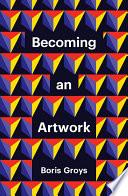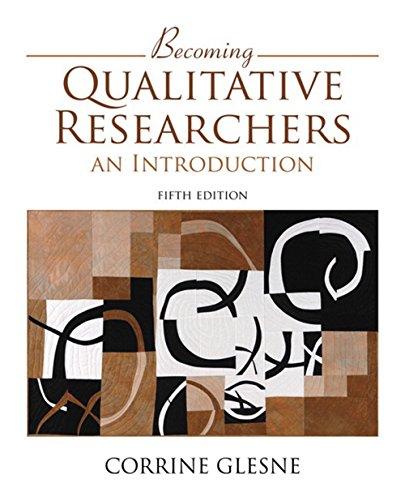Becoming an Artwork
Boris Groys
Copyright © Boris Groys 2023
The right of Boris Groys to be identified as Author of this Work has been asserted in accordance with the UK Copyright, Designs and Patents Act 1988.
First published in 2023 by Polity Press
Polity Press 65 Bridge Street Cambridge CB2 1UR, UK
Polity Press 111 River Street Hoboken, NJ 07030, USA
All rights reserved. Except for the quotation of short passages for the purpose of criticism and review, no part of this publication may be reproduced, stored in a retrieval system or transmitted, in any form or by any means, electronic, mechanical, photocopying, recording or otherwise, without the prior permission of the publisher.
ISBN-13: 978-1-5095-5196-5
ISBN-13: 978-1-5095-5197-2 (pb)
A catalogue record for this book is available from the British Library.
Library of Congress Control Number: 2022935232
Typeset in 12.5 on 15 pt Adobe Garamond by Cheshire Typesetting Ltd, Cuddington, Cheshire
Printed and bound in Great Britain by CPI Group (UK) Ltd, Croydon
The publisher has used its best endeavours to ensure that the URLs for external websites referred to in this book are correct and active at the time of going to press. However, the publisher has no responsibility for the websites and can make no guarantee that a site will remain live or that the content is or will remain appropriate.
Every effort has been made to trace all copyright holders, but if any have been overlooked the publisher will be pleased to include any necessary credits in any subsequent reprint or edition.
For further information on Polity, visit our website: politybooks.com
Our culture is often described as narcissistic. And often enough narcissism is understood as total concentration on oneself, and lack of interest in others, in society. However, the mythological Narcissus is not interested in the pursuit of his desires or contemplation of his inner visions but in the image that he offers to the world. And the image of our bodies is external to us. We cannot see our own face or our body in its entirety. Our image belongs to others, to the society in which we live. The moment Narcissus looks into the lake, he joins society, rejects his own “subjective” perspective – and for the first time looks at himself from the outside position, sees himself as others see him. Narcissus is enchanted by his own
image as an “objective” image that is produced by Nature and is equally accessible to everybody.
Narcissism means understanding one’s own body as an object, as a thing in the world –similar to every other thing. In our post-religious, secular epoch, humans are no longer considered to be containers filled by spirit, reason, or soul, but as living bodies. But one can speak about a body in at least two different ways. The body can be understood as living flesh that manifests itself through different kinds of desire: hunger, thirst, sexual desire, “cosmic feeling,” etc. Here, the difference between spirit and flesh, or thinking and desire, is not so big as it often seems to be. In the first case, one experiences evidence by solving mathematical problems; in the second case, one experiences the intensity of desire. But in both cases, one remains within the “inner world” of subjective feelings and thoughts.
The body can be discovered, though, not merely “from within” through the desires of the flesh, but also from the external, social, public perspective. From this external perspective, life does not manifest itself in the body as energy or desire, but is established by means of medical examination. The narcissistic desire is desire to
appropriate this public perspective on one’s own body – to look at oneself through the gaze of others. Or, in other words, it is a desire to bridge the gap between the inner experience of the body as living flesh and the public view of the same body as a particular thing, an object in the world. In our culture, the objectivation of the body by the gaze of others has a bad reputation because the object seems to take a lower position in the value hierarchy compared to the subject. That is why Jean-Paul Sartre famously said that Hell is other people – their gaze makes us mere objects. The object is mostly understood as a tool; the objectification of humans means subjecting them to use by others as tools. However, Narcissus does not offer himself up for any use – including the sexual one. Thus, he rejects the seduction by nymph Echo. His “no” means “no,” indeed –and the poor nymph loses her body as a result of disappointment. The image of Narcissus in the lake also cannot be used in any way. It can only be looked at. And Narcissus himself becomes identical to his reflection. One can say that Narcissus’ “inner world” becomes a lake –thoughtless, desireless, quiet. There is nothing hidden behind Narcissus’ face: you see what you
see. Narcissus sacrificed his inner world for his external image, which is accessible to everybody. At the moment at which Narcissus saw his image in the lake, he rejected all worldly seductions and all the chances and rewards of practical life in favor of pure contemplation. In this respect, the difference between narcissistic contemplation of one’s own image and Platonic contemplation of the eternal light of the Good is not so big. However, there is also a difference between these two scenes of contemplation. In the parabola of the cave, Plato describes a philosopher who leaves the cave of human society and contemplates the eternal light alone, unseen by others. On the contrary, Narcissus immerses himself in contemplation of his image in the middle of nature – potentially visible to others. Narcissus is like a living dead – still living but already dead, turning himself into an image, reduced to a pure form. That does not mean that Narcissus chose death over life. He contemplates his reflection in the lake in a state of self-oblivion that no longer differentiates between life and death. Narcissus does not want death – but nor does he want to prevent its coming. Narcissism is the opposite of self-preservation, of self-care. It produces
the body as undead form that exists only in the public eye.
In his essay about the mirror stage, Jacques Lacan describes the encounter of a child with its image in the mirror as a pre-social event, “in which the I is precipitated in a primordial form, prior to being objectified in the dialectic of identification with the other, and before the language restores to it, in the universal, its function as subject.”1 Communication with others begins, according to Lacan, with language. However, this understanding of the self-image as pre-social and pre-communicative is an effect of the specific regime of communication that dominated before the emergence of contemporary visual culture and, especially, the Internet. Today, children can make and distribute their selfies before they begin to speak. There are two possible reactions to these selfies that are expected from the public: liking or disliking.
Narcissus’ image in the lake is an early form of selfie. Having been a member of the Greek cultural community, Narcissus obviously knew that he shared with other Greeks the same aesthetic taste. We are unable to like ourselves unless we assume that we are liked by the society in which
we live. But does it mean that Narcissus was liked by Greek society and by himself because he had this particular body or, to quote Lacan, this particular I ? Not at all. He was liked because he was beautiful. But being beautiful is not a specific individual or even human characteristic. Beauty is transhuman. Not accidentally, after his death Narcissus was reborn as a flower. A flower has a different chemical and biological structure than a human body. The only common trait that allows us to compare Narcissus and a flower is that both are beautiful. And being beautiful means being a pure form, being not subjected to any suspicion concerning a dark, invisible space behind this form – not having any I.
Indeed, human bodies serve the goal of recognition and identification of humans in the public space, and also as coverage and protection of their “inner world” of desires, thoughts, and plans from the gaze of others. The human body creates a dark space of flesh isolated from the space of public visibility and identification. For society, this dark space becomes an object of suspicion and anxiety. It is what we call “soul,” or “subjectivity.” Subjectivity is nothing but a possibility to conceal and to lie. Looking at our face,
others cannot “read it” with certainty, cannot be sure that it manifests our thoughts and emotions. Every face is, to a certain degree, a poker face. Others do not have immediate access to what we think, how we feel – and that puts extremely uncomfortable social pressure on us. We are expected to explain ourselves, but the process of self-explanation has no end. In a very spectacular manner, Narcissus sacrificed his interests and desires to become a pure form beyond suspicion – to empty this form from any “content,” from the soul, from the dark “inner world.” Narcissus bridges the gap between his flesh and his public form not only by contemplating the reflection of his body that is equally accessible to everybody, but also by demonstrating ascetic concentration on this process of contemplation. The spectator cannot any more assume that there is a lie, conspiracy, strategy, and calculation hidden behind the surface of a body. The ecstatic body of contemplation offers an image of a totally socialized, “delivered,” defenseless Self.
In the Christian tradition, this act of selfemptying is called kenosis. The perfect image of kenosis is the image of Christ on the cross. Here Christ becomes a pure image because we believe
that He has emptied himself of all “subjective” desires and interests. Now, how can we differentiate between Christ and Narcissus? How can we differentiate between sacrifice in the name of total self-socialization and sacrifice in the name of self-divinization? The human gaze cannot see this difference – only the divine one. But if God is dead, only the desire of admiration by others, by society, remains. Both Christ and Narcissus became superstars. In the past when we have spoken about the Other, we meant God or maybe Satan because they had an ability to see through our bodies and identify our souls as righteous or sinful. But now the Other became others – the society that sees only our bodies and not our souls. The ethical attitude is substituted by the aesthetic and the erotic. Society is interested not in our souls but in our public image. Our civilization is, indeed, narcissistic because it only values kenosis in the name of the public image – of public recognition and admiration.
In his course of lectures given at l’École des hautes études in Paris from 1933 to 1939, under the title Introduction to the Reading of Hegel, Alexandre Kojève speaks about the desire for admiration by others as anthropogenic desire; owing to this desire,
humans become humans. According to Kojève, we can speak of desire of the first and the second order. First-order desire signals to us our existence in the world. It is quite a reversal of the standard understanding of the word “desire.” Usually, desire is interpreted as leading to attachment to things of this world. That is why, since Plato, philosophy and religion have tried to isolate the human soul from corporeal desires and direct it toward the contemplation of eternal ideas or God. However, today we are attached to the world not primarily through desires but through science. Modern contemplation is scientific contemplation of the world and everyday contemplation of the media – and not of an Idea or God. For us, it is therefore not the rejection of desires that opens the way to self-consciousness, but, on the contrary, the emergence of desires. Kojève writes:
The man who contemplates is “absorbed” by what he contemplates; the “knowing subject” “loses” himself in the object that is known . . . The man who is “absorbed” by the object that he is contemplating can be “brought back to himself” only by a Desire; by the desire to eat, for example . . . The (human) I is the I of . . . Desire.2
Desire turns one from contemplation to action. This action is always “negation.” The I of Desire is emptiness that consumes, negates, and destroys everything “external,” “given”: to satisfy hunger, one consumes food; to satisfy thirst, one consumes water. But desire of the first order produces only self-sentiment and not yet self-consciousness. Selfconsciousness is produced by a specific type of desire – the “anthropogenic” desire that is desire not of particular things but of the desire of the other: “Thus, in the relationship between man and woman, for example, Desire is human only if the one desires, not the body, but the Desire of the other.”3 Here, desire becomes dialectical. Anthropogenic desire is the negation of animal desire of the first order –the negation of negation. It does not destroy the other because it needs recognition by the other. It is this anthropogenic desire that initiates and moves history: “human history is the history of desired Desires . . . Self-Consciousness, the human reality . . . is, finally, a function of Desire for ‘recognition’.”4 Humans are ready to risk their lives and even to sacrifice them for recognition and admiration by society. The history of wars and revolutions certify that.
We can see here the beginnings of the contemporary politic of identity that is basically a struggle for recognition. Bourgeois society and culture recognize individuals for what they achieved in terms of wealth or social position. In earlier, feudal culture, individuals were recognized by their origin, their genealogy, their identity –independently of their personal achievements. Contemporary identity politics is the democratization of the feudal, aristocratic ethos: everyone has an identity, an origin, and a genealogy that have to be respected. Everybody has a body that he or she wants to be recognized, accepted, liked by society. But the desire for recognition becomes often enough frustrated. Narcissus saw himself in the lake – and recognized himself as beautiful. But what happens when we see our reflection in a lake and come to a conclusion that – according to the dominating social conventions – we do not look beautiful? Then, the desire for recognition leads to a struggle for recognition. We struggle to change our body or to adapt it to the dominant conventions. Or we struggle against these conventions to make society recognize us as we are. Contemporary narcissism is not a passive contemplation of one’s own body, but the
active, often violent, struggle for social recognition of this body as beautiful, respected, valued. Not accidentally, the popular imagination of our time is totally captured by the feudal culture with its struggles for recognition: from Star Wars to Game of Thrones and Harry Potter.
The narcissistic struggle for recognition is not only a struggle against social conventions but also a struggle against the desires of the flesh. The public image is recognized if it presents itself as a pure form – if it does not suggest a dark space of private interests, needs, and desires behind its surface. Otherwise the public image is perceived as being merely a camouflage – a means for achieving the hidden private goals.
In his essay on the notion of the gift, Marcel Mauss develops a theory of the symbolic exchange.5 According to this theory, individuals acquire social recognition not because of their wealth, but because of their readiness to lose what they have – through gifts, charity, and, more
generally, sacrifices for the common good as well as wasteful consumption, excessive festivals, and wars. To acquire a symbolic value, one has to demonstrate that one does not want anything beyond social recognition and prestige. One can say that narcissism is irrational because it contradicts the rational strategies of self-preservation and success that we associate with reasonable behavior. Indeed, reason is nothing other than manifestation of the fear of death. In our eyes, individuals are reasonable when they avoid risky situations that could lead to death and when they take decisions that improve their chances of survival. In Phenomenology of the Spirit, Hegel writes that, at the end of history – which he associated with the French Revolution – humans recognized death as humanity’s only and absolute Master.6 Thus, after the French Revolution, Europeans became reasonable – engaged in accumulating capital and building administrative careers.
Seen from this perspective Narcissus is unreasonable: he is so immersed in contemplation of his image in the lake that he loses the selfsentiment of which Kojève has spoken and dies of exhaustion. When we speak about the irrational,
we mostly mean drives and desires that move people toward adventures, conflicts, and confrontations. We speak about energy and speed, about élan vital, about Nietzsche, Freud, and Bataille. But contemplation is no less dangerous and in this sense irrational. When I contemplate, I forget my needs, disregard my environment, and my body becomes unprotected. Reading a book or contemplating an image, I lose opportunities and overlook the dangers. The same is true when I am “thinking” about something that has no direct relationship to the goal of selfprotection. In this case, reason is not transgressed but simply ignored. Contemplation is immersion into an object of contemplation that leads to self-oblivion. This object can be platonic eternal ideas. It can be God. But it can also be a beautiful image on the surface of a lake.
We tend to speak about Narcissus as being fascinated by his own image. But did he really know that this image was his own image and not just an image forming part of the surface of this particular lake? We don’t know. We can imagine that he did not know that it was his own image and that he discovered the beauty of this image just as we discover the beauty of a sunset or a
flower. Maybe Narcissus did not want to interrupt his contemplation because he thought that when he came to this lake again the image would disappear – as a sunset or a flower disappear after a while. Or maybe he noted that the image disappears when he moves away – and protecting this image was more important to him than protecting his own life. We cannot know that. When we say that Narcissus loved himself, we should also add that he loved himself not in a way that one usually has in mind – because self-love is generally understood as egoistical self-preservation. Narcissus loved himself not as we love ourselves, but as others admired and loved him – from a distance, as a body in space, as a beautiful form. It seems that this metanoia – the substitution of one’s own gaze directed toward the other by the gaze of the other directed toward oneself – is impossible. But Narcissus’ discovery of his image in the lake was the discovery of the mediation between my own gaze and the gaze of others. If somebody were to see the image of Narcissus in the lake, that somebody had to see the same image as Narcissus saw. The same can be said about the reflection of a face in the mirror. The same can be said about a photograph, and so on.
The possibility of pictorial representation of the human form creates a zone of mediation between my gaze and the gaze of the other. It is precisely this common zone in which the struggle for my image, my identity, and my status becomes not only possible but, rather, necessary. And it is not merely a fight against the social conventions concerning beauty and public admiration.
Here Narcissus starts a more radical fight – a fight against death as Absolute Master. When the form of my body is transposed from its organic bearer to a different bearer, it begins to circulate beyond the circle of my immediate presence in the eyes of others – and thus also beyond the time of my life. My image belongs to my afterlife because its further existence is independent of my presence. The production of the images is the production of afterlife. Of course, when I die my inner world disappears. But if I have already emptied this world in the name of my public image, then my death loses its edge. And the exposure of one’s own body to the gaze of others requires the same degree of kenosis as the contemplation of an image. Narcissus practices both types of kenosis: he is immersed in the presentation of his own image and in contemplating this image at
the same time. In this sense, Narcissus is already dead – or at least prepared for death – as he looks into the lake: his flesh is as dead as the water of the lake. Of course, Narcissus has mediated his image only partially, for a relatively small circle of contemporaries and for a relatively short time. Today’s Narcissus makes selfies and distributes them through Facebook and Instagram. But here the following question arises: to what degree can a photograph really identify a person?
Of course, nowadays one uses photography as the main tool of identification. All important documents, including the passport, contain a photograph of the person that they are supposed to identify. However, can we say that our ID answers the question of personal identification? The answer to this question depends on our understanding of personhood. Usually, when we say that we know and can identify somebody, we mean not only that we can recognize his or her face, but also that we more or less know how this particular person will act, what can be expected from him or her. When someone breaks these expectations, we say that we do not recognize that person any more. That means that the word identity has two interconnected but different
meanings: it means the identity of face and body, but also identity of a certain character, a certain pattern of behavior that is characteristic of a particular person. We know that one should not draw any conclusions about the character of a person based on their appearance. As Hegel argues in Phenomenology of the Spirit, an individual cannot reveal the truth of their character through introspection, through the examination of their own soul: such introspection ends in uncertainties and conjectures. But this truth also cannot be drawn from the investigation of this individual’s appearance. The human body offers only an image of possibilities that this body can eventually realize.7 The truth of a person manifests itself only in action that demonstrates which possibilities were realized – and which were not realized. In other words, Hegel believes that individuals can and should be identified not only by an image of their face and body but also by an image of their actions. The medium of this public image of the individual in action is historical documentation. But here the following question emerges: what are we ready to consider as an action? For Hegel, an action means, of course, a political action – war, revolution, introduction
of a new law. Through their history, individuals objectify themselves, make their dark inner space visible, by realizing the possibilities that, as Hegel argues, remain hidden as long as the individual remains passive. However, even if an individual is in control of his or her actions, the question remains: who is in control of the presentation of these actions? According to Hegel, presentation is controlled by the spectator, the historian, the philosopher. It is they who create an image of an action – and place this image in an historical context.
But to achieve public visibility, an individual does not necessarily need to take action. Let us imagine a photograph of Narcissus looking into the lake. Such a photograph would document a seemingly passive state of prolonged, immersive contemplation. However, as it was shown before, in the case of Narcissus we have to deal strictly with the simultaneous act of self-contemplation and the offering of his own image to the gaze of the other. In other words, the state of passivity can also be interpreted as an action – as an act of self-exposure. And such an act of self-exposure puts the individual in control of its image. Here, the individual does not need a historian or a
philosopher, who, at some point in the future, will form and interpret his or her image. On the contrary, precisely in the state of alleged passivity, the individual can dictate his or her image to the spectator here and now – as well as to a future spectator.
Siegfried Kracauer discusses the use of photography as a tool of identification in a relatively short article from 1927 entitled “Photography,” and comes to the conclusion that photography does not open, but, rather, blocks the way to the inner, spiritual identity of a model. As an example, Kracauer takes a photograph of his grandmother – that is, a private photograph, a photograph of sentimental value – and states that this photograph does not bring back memories of his grandmother but, rather, blocks them. His grandmother as a person, as an individual, as a spiritual being is not disclosed by a photograph, but instead only her outward appearance becomes visible, which reflects the fashions of
her time that are manifested through her clothes and makeup and thus seem impersonal and deindividualized. Kracauer writes:
Nothing of these [things] contains us, and the photograph gathers fragments around a nothing. When the grandmother stood in front of the lens, she was present for one second in the spatial continuum that presented itself to the lens. But it was this aspect and not the grandmother that was eternalized . . . What appears in the photograph is not the person but the sum of what can be subtracted from him or her. The photograph annihilates the person by portraying him or her, and were person and portrayal to converge, the person would cease to exist.8
The inner identity of the model cannot be captured through its external features. For Kracauer, every photograph is merely a general inventory of diverse fragments or details that lack an inner unity. Such a unity can only emerge on the level of meaning, sense, signification, and yet this sense and meaning cannot, by definition, be photographed. As a consequence, photography for Kracauer is a mere collection of refuse, a phantom
and a sign of death: instead of vanquishing death, photography kills, for it captures only the body, the corpse, and negates the soul.
Here it is obvious that Kracauer is infected by the Hegelian notion according to which subjectivity, the inner self, reveals itself in action. For Krakauer, it is the specific mode of living and communicating with her relatives and friends that reveals the true spirit of his grandmother. Krakauer keeps the loving memories of his communications with his grandmother. But these memories – being biographic, historic –cannot be found in the photographic image. The photograph that immobilizes the body of the grandmother seems, rather, to build a wall that totally conceals her true self.
Now, it is interesting to observe that Kracauer’s strategy is repeated, in all its essential aspects, in a book that belongs to those texts that play a key role in contemporary discussions on documentary photography – namely Roland Barthes’s Camera Lucida from 1980. Barthes takes photographs of his deceased mother as an example and tries to recognize her in these photographs – but he also does not succeed. The inner being, the true identity of his mother, once again escapes











